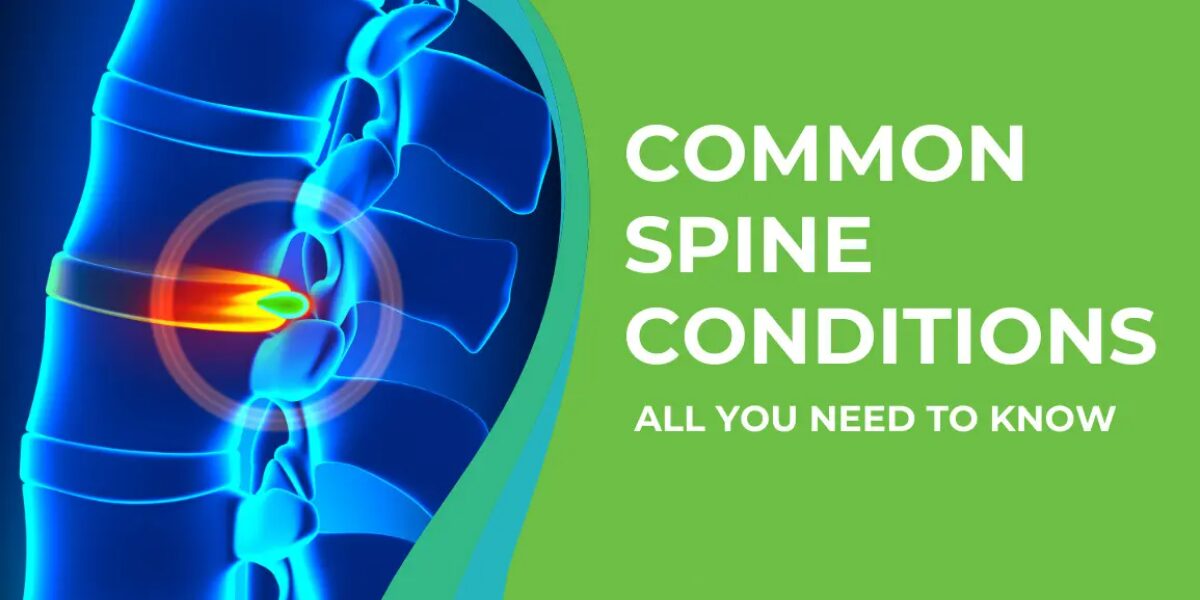
Understanding Common Spine Conditions
As a leading spine specialist in Pune, Dr. Sachin Mahajan is dedicated to providing comprehensive care for patients with various spine conditions. The spine, a complex structure consisting of vertebrae, discs, nerves, and ligaments, plays a crucial role in supporting the body and facilitating movement. However, various factors such as aging, injury, and degenerative changes can lead to spine-related issues, causing discomfort and affecting overall quality of life. In this blog, we’ll explore some of the most common spine conditions treated by Dr. Mahajan, along with their symptoms, causes, and available treatment options.
1. Degenerative Disc Disease: Degenerative disc disease is a condition characterized by the gradual breakdown of the spinal discs, leading to pain, stiffness, and reduced mobility. Factors such as aging, repetitive stress, and poor posture contribute to the development of this condition. Treatment options may include physical therapy, medication, and in severe cases, surgical intervention.
2. Herniated Disc: A herniated disc occurs when the soft inner material of a spinal disc protrudes through the tough outer layer, pressing on nearby nerves and causing pain, numbness, and weakness. Treatment may involve rest, medication, physical therapy, and in some cases, surgery to relieve pressure on the affected nerve.
3. Spinal Stenosis: Spinal stenosis refers to the narrowing of the spinal canal, leading to compression of the spinal cord and nerves. This can result in symptoms such as pain, numbness, and tingling in the back, legs, or arms. Treatment options may include medications, steroid injections, physical therapy, and surgery to alleviate pressure on the spinal cord.
4. Spondylolisthesis: Spondylolisthesis occurs when a vertebra slips out of place and onto the vertebra below it, causing instability and nerve compression. Symptoms may include back pain, leg pain, and difficulty walking. Treatment options may include bracing, physical therapy, and in severe cases, surgery to stabilize the spine.
5. Spinal Fractures: Spinal fractures can result from trauma, osteoporosis, or other underlying conditions, leading to pain, deformity, and loss of function. Treatment depends on the severity and location of the fracture but may include bracing, medication, and surgery to stabilize the spine and promote healing.
In children, spine conditions can vary in severity and presentation, but some common spine conditions include:
- Scoliosis: Scoliosis is a sideways curvature of the spine that typically develops during growth spurts before puberty. It can range from mild to severe and may require monitoring or treatment, such as bracing or surgery, depending on the degree of curvature and the child’s age.
- Kyphosis: Kyphosis is an excessive outward curvature of the spine, leading to a rounded or hunched back appearance. While some degree of kyphosis is normal, excessive curvature can cause discomfort and affect posture. Treatment options may include physical therapy, bracing, or surgery in severe cases.
- Lordosis: Lordosis is an excessive inward curvature of the spine, commonly known as swayback. It can be congenital or develop due to poor posture or muscle imbalances. Treatment may involve physical therapy to strengthen the muscles supporting the spine and improve posture.
- Spondylolysis and Spondylolisthesis: These conditions involve stress fractures or slippage of vertebrae in the spine, often occurring in the lower back. They can result from repetitive stress, sports injuries, or congenital defects. Treatment options may include rest, physical therapy, bracing, or surgery in severe cases.
- Scheuermann’s Disease: Scheuermann’s disease is a condition that causes abnormal growth of the vertebrae, leading to a rounded or hunched back appearance, known as kyphosis. It typically develops during adolescence and may cause back pain and stiffness. Treatment may include bracing or surgery in severe cases.
- Spinal Cord Tumors: Spinal cord tumors are rare in children but can cause symptoms such as back pain, weakness, or loss of sensation. Treatment typically involves surgery to remove the tumor, followed by chemotherapy or radiation therapy if necessary.
It’s essential for parents to be aware of these common spine conditions in children and seek prompt evaluation and treatment from a pediatric neurosurgeon if any concerns arise. Early intervention can help manage symptoms, prevent complications, and promote optimal spinal health and development in children.
As a highly skilled spine specialist in Pune, Dr. Sachin Mahajan offers advanced diagnostic techniques and personalized treatment plans to address a wide range of spine conditions. Whether you’re experiencing back pain, neck pain, or other spine-related symptoms, Dr. Mahajan and his team are committed to providing expert care and helping you achieve optimal spinal health and function. Schedule a consultation today to discuss your treatment options and take the first step toward relief.




